Effective Strategies for Wasp Control in Eaves
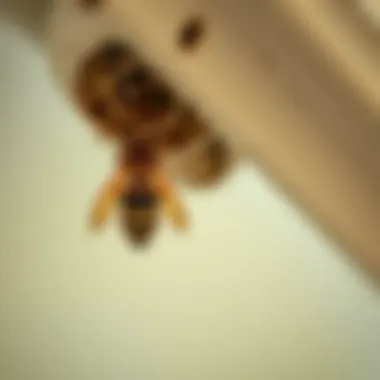
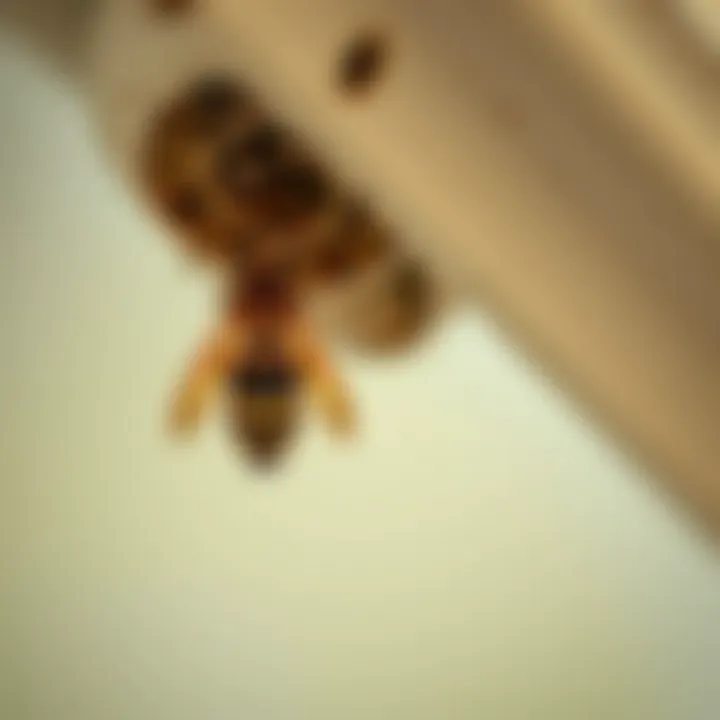
Intro
Tackling wasps in the eaves can feel like a daunting task for many homeowners. Wasps, with their irritable buzzing and sometimes aggressive behavior, seem to add a layer of stress to the serene life of home ownership. Yet understanding them, coupled with proper strategies, can pave the way for a wasp-free home environment.
In this guide, we will delve into the complexities of these pests, highlighting effective strategies for identification and removal that prioritize both your safety and the ecosystem. Whether you're facing an infestation or just looking to prevent one, arming yourself with knowledge is the first step. Let’s say goodbye to those uninvited guests without compromising the balance of nature in your backyard.
Understanding Wasps
In order to tackle the issue of wasps nesting in eaves, it's essential to understand their characteristics and behavior.
Wasps are not only known for their intimidating stingers, but they also play a distinct role in our ecosystem. Their natural behaviors and preferences make them a complex entity, and knowing these can arm homeowners with information that is crucial for both prevention and effective removal. To effectively eliminate wasps from your premises, grasping the key players in their biology and lifestyle helps significantly. This section gives an overview of the biology of wasps, the species most commonly found in eaves, and their lifecycle stages.
Understanding these aspects not only provides insights into how you can identify and eradicate their nests but also informs preventative measures that can be taken to avoid future infestations. By comprehending their habits, behavior and the environments they thrive in, you are better positioned to make informed decisions about management strategies.
Biology of Wasps
Wasps belong to the order Hymenoptera, a classification they share with bees and ants. Their structure is distinct, generally characterized by a slender body, a narrow waist, and two pairs of wings. The colors can vary greatly—many displaying vivid yellow and black patterns, which can serve as both camouflage and a warning to potential predators.
Wasps are carnivorous or omnivorous and are known for their predatory nature, which helps control pest populations. Unlike bees, wasps can sting multiple times, making them far more aggressive when disturbed, especially in proximity to their nests. Understanding this biology is crucial; it equips individuals with the knowledge needed to exercise caution when dealing with infestations.
Species Commonly Found in Eaves
Within residential settings, different wasp species might find eaves an appealing habitat. Some of the common culprits include:
- Yellowjackets: Aggressive and fiercely territorial, these wasps nest in cavities often found in walls and eaves.
- Paper Wasps: Known for their distinctive umbrella-shaped nests, paper wasps tend to build their residences under eaves, in corners, or similar sheltered locations.
- Bald-Faced Hornets: Despite their name, they are actually a type of wasp. They create large, paper-like nests often suspended from eaves or branches.
Recognizing the species is an important step, as it informs the approach you should take in addressing the issue. Each has its unique behaviors, nesting styles, and level of aggression.
Lifecycle Stages
A wasp's lifecycle can be divided into four main stages:
- Egg: The queen lays eggs in a cell she creates.
- Larva: After hatching, larvae are typically fed by adult wasps until they mature.
- Pupa: This stage involves metamorphosis within the confines of a silken cocoon.
- Adult: Mature wasps emerge to continue the cycle, with new queens starting their nests in spring.
Understanding the lifecycle can aid in timing removal efforts optimally. For instance, early spring may find eggs and larvae present, while late summer might see fully-fledged colonies swarming.
Knowing the lifecycle helps you decide the best time for intervention. Eliminating nests at the right moment can significantly reduce the number present in your vicinity.
Arming yourself with knowledge about wasps is critical for effectively managing potential infestations. By diving into their biology, identifying common species, and recognizing their lifecycle stages, you're already on the path to securing your home against these pests.
Risks Associated with Wasp Nesting
Understanding the risks linked to wasp nesting is vital for homeowners and those who often find themselves in close quarters with these stinging insects. While wasps play a role in ecological balance, their presence close to human living spaces can pose various issues that need addressing. Ignoring these risks may lead to unwarranted encounters, health issues, or property damage. Consequently, this section examines the potential hazards associated with wasps in your eaves, providing insights into health dangers, damage to property, and the broader impact on local ecosystems.
Health Hazards
Wasp stings can cause significant discomfort. For many, these stings result in localized pain, swelling, and redness. However, in susceptible individuals, such as those with allergies, a single sting could escalate into a severe allergic reaction known as anaphylaxis. Symptoms like difficulty breathing, swelling of the face or throat, and a rapid heartbeat may become life-threatening if not treated promptly.
It's crucial to be aware that wasps are generally protective of their nests. Merging their aggressive tendencies with a potential sting can lead to serious health complications. To ensure safety, it's wise for homeowners to understand the warning signs of an infestation early, rather than discover it when the wasps are agitated.
Property Damage
Wasps often choose to nest in eaves and similar structures, which could lead to structural concerns over time. Their nests, while primarily made of paper-like material that they produce from wood fibers mixed with saliva, can cause damage as they grow. In some instances, nests can reach sizes that interfere with gutters and drainage systems, leading to possible water damage during rainstorms.
Additionally, if wasps consistently return to the same nesting site, homeowners may face deteriorating siding or other structural components. Ignoring these signs can create costly repairs. Therefore, being proactive about wasp removal is not just about addressing immediate discomfort from stings; it’s also about preserving the structural integrity of your home.
Impact on Local Ecosystem
On a larger scale, wasps serve a purpose in their ecosystems as pollinators and pest control agents. However, when they nest too closely to human habitats, it can create an imbalance. Large populations of wasps can lead to depleting the available food sources for native wildlife, including beneficial insects and birds. This shift may ripple through the food chain, impacting local biodiversity.
Additionally, if wasps become too prevalent in a neighborhood, their aggressiveness can deter people from enjoying outdoor spaces, further harming local wildlife and reducing community interaction with nature.
In summary, while wasps do contribute to ecological functions, the risks associated with their nesting in close proximity to human dwellings cannot be overlooked. Understanding these risks equips homeowners with the necessary knowledge to act swiftly and adequately, ensuring a balance between cohabiting with nature and maintaining comfort and safety in their own spaces.
"A stitch in time saves nine." Addressing the risks of wasps in your eaves promptly can save you from larger problems down the road.
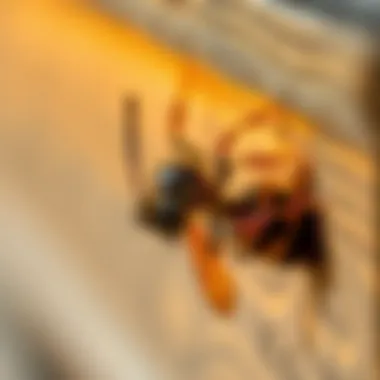
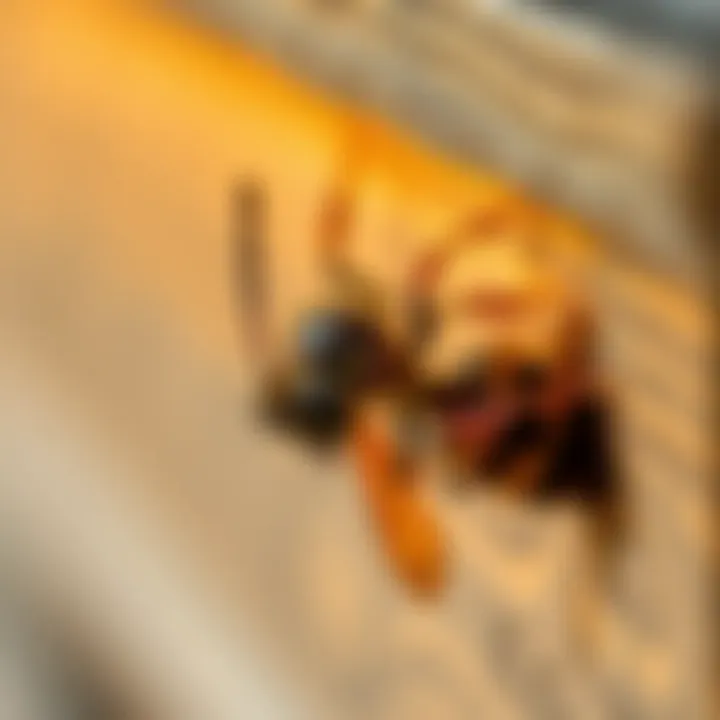
Identifying Wasp Infestations
Identifying a wasp infestation effectively is the cornerstone of managing these troublesome creatures. The faster you can recognize their presence, the less likely you are to face an uncontrollable situation. Addressing an infestation early on can save considerable hassle, both in terms of safety and potential damage to your property. This section delves deeper into three critical aspects: signs of wasp presence, how to determine nest location, and visual identification techniques.
Signs of Wasp Presence
Detecting wasps in and around your eaves might seem straightforward, but these critters can often be elusive. Be attentive to the following signs:
- Increased Wasp Activity: Notice a spike in wasp activity between late spring and early fall, which is their peak season. If you see more than a couple buzzing around, it's time to keep your eyes peeled.
- Unusual Noises: A low buzzing sound near the eaves can signal a nest nearby. Listening closely might give you clues on where they’re nesting.
- Visible Nests: Nests can sometimes be spotted, often resembling grey or brown paper-like structures. They’re usually round or oval and might hang from eaves or in sheltered areas.
- Aggressive Behavior: If you find yourself avoiding your porch due to persistent wasps, they likely perceive you as a threat. This aggressive behavior indicates you’re dealing with a substantial presence.
Recognizing these signs early can help in taking appropriate action before the situation escalates.
Determining Nest Location
Once you suspect a wasp infestation, figuring out their nest location becomes essential. Locating the nest allows you to strategize your removal efforts effectively. Here’s how you can pinpoint where they dwell:
- Observation at Dusk: Wasps are more docile as evening approaches. Watching their flight paths can help you trace their routes back to the nest.
- Inspect Areas Around Your Home: Check the eaves, under roof overhangs, in trees, and any hollow spaces. Nests may be hidden from direct view, so being thorough is important.
- Look for Entry Points: Sometimes wasps use gaps and crevices to access their nests. A meticulous look at potential entry points in your eaves can give you hints.
- Marking the Area: If you suspect a specific area, it can be useful to mark it for further monitoring or when you are ready to address the infestation.
Effective location determination can make all the difference in your approach to removing the nests safely.
Visual Identification Techniques
Visual identification is another critical skill in managing wasps. These insects are members of the Hymenoptera order and hold distinctive physical characteristics:
- Yellowjackets: Easily recognized by their black and yellow stripes, they are more aggressive and often mistaken for bees. Their nests are often found in ground cavities.
- Paper Wasps: These are usually long and slender with noticeable legs hanging down in flight. Their nests have an open structure, resembling an umbrella.
- Hornets: Generally larger than other wasps, they are often black and yellow or brown. Their nests can be quite large and are usually built in trees or high places.
- Mud Daubers: These solitary wasps are less aggressive. They build distinct mud nests and don't form colonies, making them less of a concern.
In distinguishing these various types, not only do you empower yourself to make informed choices regarding removal, but you also mitigate chances of mistaking them for beneficial insects.
It's crucial to remember: Knowledge is power. Identifying wasp presence, nest locations, and understanding their visual characteristics can significantly lead to successful removal efforts while ensuring safety.
Prevention Strategies
Preventing wasp infestations in your eaves is an essential step in protecting your home and ensuring your comfort. By implementing proactive measures, one can not only reduce the likelihood of wasps taking up residence but also create an environment that is less appealing to these insects. Prevention isn't just about reducing risks; it’s about fostering a home that harmonizes with local wildlife while maintaining your sanctuary.
Habitat Modification
Altering the immediate environment around your home can work wonders in discouraging wasps from setting up shop in your eaves. Wasps typically thrive in areas where they can find shelter and nesting materials. Therefore, consider the following strategies:
- Trim back overgrown plants and shrubs: Keep vegetation well-maintained. Overgrowth can provide adequate shelter for wasps.
- Eliminate standing water: Stagnant water is a magnet for various pests, including wasps. Regularly check for areas that may collect water, such as clogged gutters or birdbaths.
- Remove old nests: If you've had wasps in the past, be sure to remove any lingering nests that may attract new colonizers. Treat areas where nests might have been with a safe disinfectant to mask previous traces of pheromones that might lure new wasps.
Making these habitat modifications sends a clear message to any wasps passing through – this space is not conducive to nesting.
Food Source Management
Wasps are notoriously attracted to food sources, so proper management can significantly decrease the chances of infestation. Here are some efficient practices:
- Secure trash bins: Make sure that your waste containers have tightly fitted lids. Wasps will feast on food scraps, especially sweet or protein-rich materials.
- Store food indoors: If you enjoy summer picnics or BBQs, keep food covered and stored inside whenever possible. Leaving food out is an open invitation for wasps.
- Clean up spills promptly: If something sweet or fragrant is spilled outside, clean it up right away. Sweet odors can act like a beacon for wasps.
- Opt for wasp-unfriendly plants: Certain plants can act as natural repellents, such as mint and citronella. Keeping these around your home can help mask food odors that draw wasps in.
Properly managing food sources does more than just cut down on pests; it keeps your outdoor spaces enjoyable.
Seal Entry Points
An effective strategy to prevent wasps from invading your eaves is to seal off all potential entry points. Here are specific actions you can take:
- Inspect your home carefully: Look for any cracks or crevices in the eaves, soffits, and siding. Even small gaps can serve as doorways for exploring wasps.
- Use caulk or expanding foam: After identifying gaps, fill them using weather-resistant caulk or foam. This will also help with energy efficiency—it's a win-win!
- Install screens: Ensure that vents and openings are fitted with fine mesh screens. This forms an additional barrier against intruding insects.
- Close off attics and eaves: If your home permits it, keep attic doors and eave vents closed when not in use.
By sealing entry points, you're creating a physical barrier, supporting not just your home’s defenses but also your peace of mind.
Remember, these preventive measures require minimal effort but can significantly lower the chances of a wasp invasion. A little diligence today goes a long way in ensuring a pest-free tomorrow.
By integrating these prevention strategies into your routine, you will better protect your home from potential wasp nests in eaves, leading to a safer and more pleasant living environment.
Eco-Friendly Removal Techniques
In the pursuit of eliminating wasps from eaves, many homeowners are increasingly leaning towards eco-friendly removal strategies. Not only do these approaches help manage wasp populations, but they also minimize harm to the environment. Understanding and implementing natural methods stands as a compelling choice for those looking to maintain a balance, avoiding any disruption to the local ecosystem.
Using eco-friendly techniques resonates particularly well with house owners who share a responsibility toward nature. People are becoming more aware of their ecological footprint, leading them to seek out sustainable pest management solutions. The benefits of these techniques extend beyond just the removal of pests; they promote safer living spaces without relying on harmful chemicals that could affect not only insects but also pets and children.
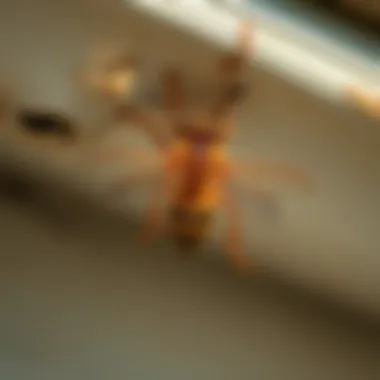
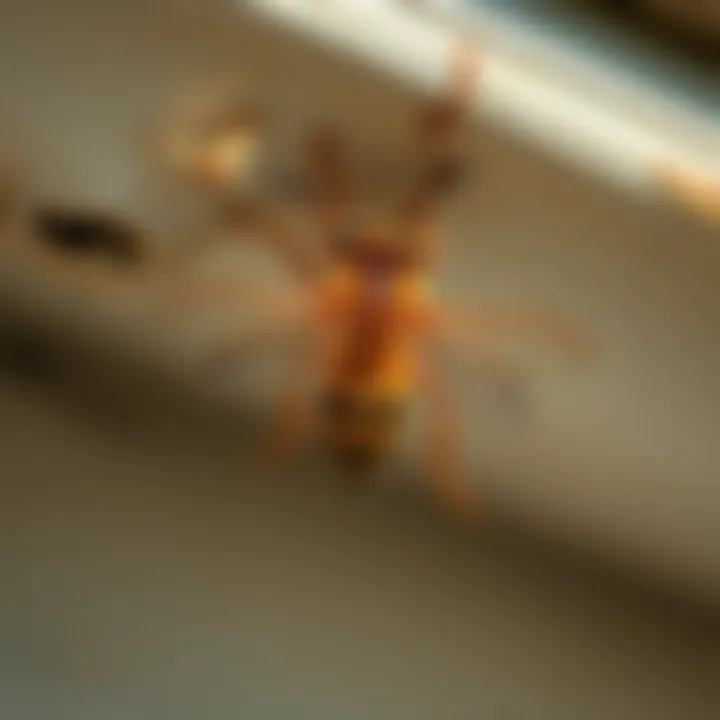
Natural Deterrents
Natural deterrents serve as a first line of defense against wasps. These deterrents typically leverage scents or substances that wasps find repugnant, steering them away from your home.
- Peppermint Oil: One popular choice is peppermint oil. Adding a few drops to water and spraying around eaves can act as a powerful repellent. The strong scent often drives the wasps away without harming them.
- Vinegar: Another effective option is vinegar. A mixture of equal parts vinegar and water sprayed around the area sends a message to wasps that the space is inhospitable.
- Cucumber Slices: Surprisingly, slices of cucumber can emit a scent that is unappealing to wasps. Place them in areas where you've noticed wasp activity, and you'll likely see a decline in visits.
This strategy is simple and low-cost, making it appealing. However, it’s important to regularly refresh these deterrents to ensure maximum effectiveness.
DIY Traps
Creating your own traps can be a practical and efficient approach. DIY traps cater to a hands-on solution, allowing homeowners to control their environment without resorting to chemical products.
- Bottle Trap: One of the simplest forms is a bottle trap. Cut the top off a plastic soda bottle, invert it, and place it back into the bottom portion facing down. Add sugar water or soda at the bottom to attract the wasps. This method capitalizes on their feeding habits while providing an easy cleanup option.
- Fruit Trap: You can also bait traps with overripe fruits or sugary syrups suspended in a container. This entices wasps in, while a narrow opening keeps them from escaping.
Setting up multiple traps in different areas can be beneficial, especially if wasps have multiple entry points around your property. Regular emptying of the traps is key to maintaining their efficacy.
Botanical Solutions
Exploring botanical solutions can create an eco-friendly strategy rich in natural ingredients. Plant-based methods offer a dual benefit: while they tackle the wasp issue, they can also enhance the aesthetics of your garden or outdoor space.
- Planting Certain Herbs: Herbs like basil or thyme can repel wasps when planted near eaves. Not only will they minimize wasp presence, but they'll also add beauty and fragrance to your home environment.
- Essential Oils: Various essential oils, such as clove oil or geranium oil, can be mixed with water and used as sprays. These oils disrupt the wasps’ senses, deterring them from nesting near.
With these botanical solutions, you're not just removing a nuisance but also cultivating a garden that can serve as a protective barrier against further infestations.
"An ounce of prevention is worth a pound of cure."
In the long run, adopting eco-friendly removal techniques can foster a sustainable and safe environment for both humans and wildlife. These methods ensure a harmonious balance between maintaining a wasp-free space and promoting ecological responsibility.
Chemical Solutions
Chemical solutions play a crucial role in effectively tackling wasp infestations, especially when other methods fall short. These solutions provide immediate results, often neutralizing wasps quickly. In an environment where safety is paramount, understanding the ins and outs of chemical applications is necessary for homeowners.
When dealing with wasps, it can be tempting to ignore the potential hazards of using chemicals. However, knowledge is power, and this segment will systematically break down the best practices for utilizing these products effectively and safely.
Commercial Insecticides
Commercial insecticides designed for wasps come in various formulations, each tailored to specific scenarios. These might include sprays, foams, or dusts, and each type has its benefits:
- Sprays: Often have a long reach, allowing one to douse nests from a safe distance.
- Foams: Good for sealing entrances, making them suitable for dealing with nests hidden in cracks or crevices.
- Dusts: These can be effective for nests in hard-to-reach places, as the dust will cling to the wasps when they enter.
Before making a purchase, look for products that specifically list wasps and their nests on the label. This ensures effectiveness and is a key step towards successful removal. Emergencies can pop up when there are small children or pets around, thus cranking up the importance of choosing the right product responsibly.
Safety Precautions
Safety should take precedence when using chemical solutions. After all, no one wants to make a bad situation worse. Here are some safety precautions to follow:
- Use Protective Gear: Always wear gloves, long sleeves, and goggles to safeguard your skin and eyes.
- Whitling Weather Considerations: Apply chemicals during calm weather to prevent drift. Wind can blow chemicals onto unintended surfaces or individuals.
- Time of Application: The best time to spray is during the evening when wasps are less active.
- Keep People Away: Ensure that family members and pets are at a safe distance during application.
Let’s not forget, avoid applying chemicals near plants and flowers, as beneficial insects may also be affected.
Application Techniques
How you apply the insecticide can significantly impact its effectiveness. Here are some proven techniques:
- Direct Nest Application: If possible, aim for the nest directly. It allows the insecticide to infiltrate where the wasps are gathered.
- Use a Wand or Nozzle: For products that don't come with a nozzle, consider purchasing a separate spray wand. It allows for precise application and greater distance.
- Follow Instructions: Pay attention to the recommended dosages and instructions on the label. Do not guess; the chances of over-application can lead to unwanted consequences.
- Repeat if Necessary: Sometimes, it might take a few applications for complete elimination. Be patient and monitor the situation.
Always read labels thoroughly before use. Misapplication can create hazards not just for wasps, but also for humans and the environment.
When to Seek Professional Help
Dealing with wasps can be a tricky business, especially when they decide to call your eaves home. While some might believe they can tackle the issue solo, knowing when to ring in the pros is essential. Professional pest control not only ensures safety but also promises a more effective resolution, without becoming a guessing game of trial and error. The goal is to handle the situation safely and effectively while protecting your living environment.
Assessing the Infestation Size
The first step in deciding whether to seek professional help revolves around the size of the infestation. A small cluster of wasps might be manageable with home remedies, but if there’s an overwhelming number buzzing about, it’s wise to consider external assistance.
Factors to evaluate include:
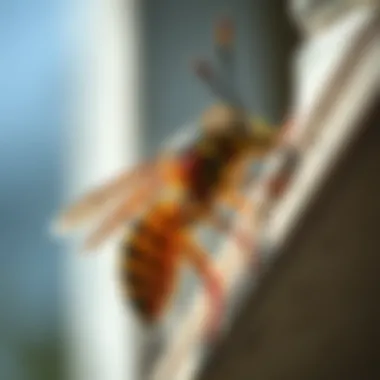
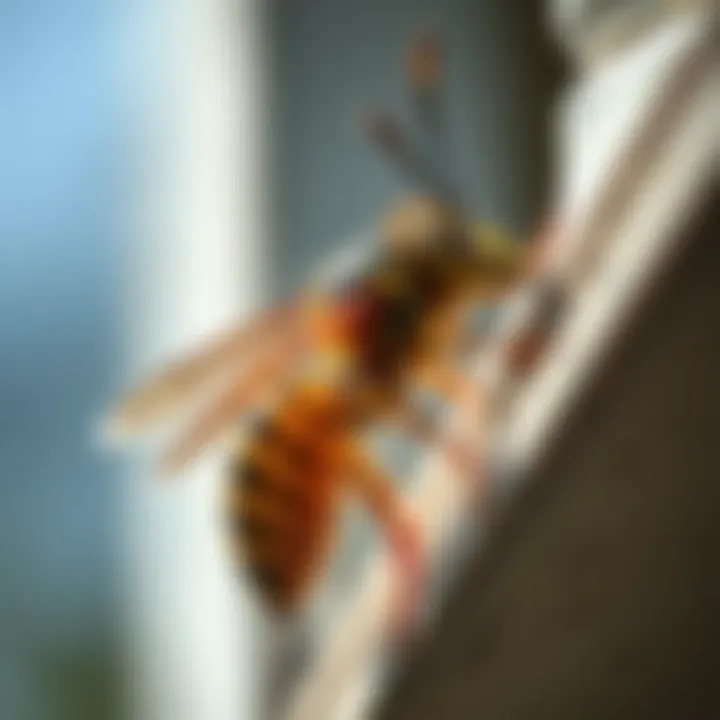
- Quantity: If you're spotting more than a handful each day, it’s time to evaluate further.
- Nesting: If the nest appears large or complex, it's likely that the hive has a significant population.
- Location: Nests hidden in hard-to-reach places, like high eaves or deep within the structure, increase the risk of stings during removal attempts.
Taking these elements into account helps gauge whether to reach out to experts rather than risking a puff of wasp spray that only aggravates the situation.
Understanding Local Regulations
Before laying down the law on those pesky wasps, it’s crucial to understand local regulations surrounding pest control. Some areas have strict guidelines about how and when exterminations can occur, particularly concerning beneficial insects. You wouldn’t want to find yourself on the wrong side of the law while trying to protect your home.
Things to check include:
- Species Protection: Certain wasps might be protected under local or state laws, and it’s unlawful to remove nests without appropriate permissions.
- Professional Licensing: Ensure that any pest control service you consider has the necessary licenses and adheres to local regulations.
- Environmental Considerations: Sometimes, eco-friendly options or integrated pest management approaches are recommended or required within your community.
Getting a clear handle on these regulations not only outlines your options but also minimizes unnecessary risks.
Choosing a Pest Control Service
Once you’ve deemed it necessary, finding the right pest control service becomes the next step. Not all pest control companies operate the same way, and your approach should reflect that.
When selecting a pest control service, consider:
- Reputation: Look for reviews, recommendations from neighbors, and customer feedback online. Trustworthy service often comes from well-reviewed entities.
- Methods Used: Investigate whether they employ chemical solutions or eco-friendly methods. Going green can significantly limit harm to beneficial insects and the ecosystem.
- Experience: Opt for companies with specific experience dealing with wasp infestations. Their expertise can lead to quicker and safer resolutions.
Working with a reliable pest control service not only gives peace of mind but also enhances the likelihood of a thorough job being done. Choosing rightly may well be the difference between a fleeting solution and a long-lasting eradication.
Long-Term Management Approaches
An effective long-term management approach for dealing with wasps in eaves not only reduces the immediate threat of an infestation but also establishes sustainable practices to prevent future occurrences. Wasps, like many pests, are more than just a nuisance; their presence can seriously affect the comfort and safety of your home. Therefore, being proactive is paramount.
A key aspect of long-term management is ensuring that your home is less inviting to these stinging insects. Consider factors such as environmental design and communal awareness that ultimately contribute to the bigger picture. Working not just individually at your residence, but also involving community members enhances the efficacy of your strategies. It’s a team effort that extends beyond the four walls of your home.
Monitoring Strategies
Monitoring is essential for identifying potential wasp activity before it escalates into a full-fledged infestation. Regularly inspecting your eaves and surrounding areas can help catch early signs. Pay attention to:
- Nesting Behavior: A few wasps darting around may seem harmless, but it could signal a nest nearby.
- Flight Patterns: Watch for increased wasp sightings during late summer, as this is when they are most active.
Utilizing tools such as cameras or even a simple notebook can aid in documenting any significant changes or increased activity. If you notice a pattern of repeated wasp encounters, this can be a clear cue that intervention is necessary.
Integrating Pest Control Practices
Integrating pest control with preventive measures ensures a comprehensive strategy against wasps. This means practicing methods like:
- Natural Deterrents: Using essential oils, vinegar, or other compounds can repel wasps without the harsh effects of chemicals.
- Routine Checks: Incorporate regular maintenance checks as part of household chores. Having a checklist can help homeowners keep track and remain vigilant.
Moreover, it's wise to design your landscaping in a way that minimizes food sources for wasps. Consider moving flowering plants away from eaves or utilizing plants that don’t attract these insects. When such practices become habitual, they contribute to a decrease in wasp populations over time.
Educating Community Members
Bringing the broader community into your wasp management efforts can yield substantial benefits. Organizing workshops or discussion groups can provide valuable insights into effective strategies and share personal experiences. Ensure that your neighborhood is aware of the potential hazards of wasps.
- Community Bulletins: Create flyers or posters detailing easy preventative measures and signs of infestation.
- Encourage Reporting: Set up a system where members can report wasp sightings or nests, fostering a collective approach to pest control.
By collaborating and sharing information, the community can build a localized body of knowledge that reinforces healthy environmental practices.
Effective long-term management of wasps is not merely about reacting to infestations. It involves anticipating problems and educating others to create a harmonized living space.
In summary, adopting long-term management strategies against wasps doesn't just mean chasing them away; it involves understanding their behavior, preventing them, working together as a community, and maintaining a focus on eco-friendly practices. Once homeowners recognize the bigger picture, it often leads to a more comfortable living environment for all.
Closures
As we come to the end of our exploration into the various methods for managing wasps in eaves, it's pivotal to reflect on the core ideas presented throughout this article. Dealing with wasps isn’t just a matter of personal discomfort; it’s a significant concern for the safety and well-being of a household. Understanding wasps’ behavior, their nesting preferences, and the potential dangers they pose is essential for effective management.
Summary of Effective Strategies
In summary, tackling wasp problems boils down to a few foundational strategies. First, identifying the signs of wasp activity early allows for timely intervention. Keeping an eye out for nests and understanding where they prefer to reside can help in long-term prevention efforts. Regular habitat modifications, such as removing food sources and sealing potential entry points, prove instrumental in reducing the likelihood of wasps setting up camp near your home.
Utilizing eco-friendly removal techniques, such as natural deterrents and DIY traps, can significantly reduce reliance on chemical solutions and minimize harm to beneficial insects and the environment. If all else fails, knowing when to seek professional help is crucial—sometimes it takes an expert to deal with larger infestations effectively.
Promoting Eco-Friendly Practices
Promoting eco-friendly practices in wasp management not only safeguards your home but also protects the environment. It's essential to adopt a mindset that favors natural solutions over chemical ones whenever possible. By using substances like peppermint oil or vinegar, you can create an environment that's inhospitable to wasps without jeopardizing other wildlife. Additionally, educating your community about responsible wasp management fosters a collective effort towards minimizing conflicts with these insects.
By implementing the strategies discussed, house owners can maintain a balance between living comfortably and respecting nature. Remember, a proactive approach to wasp management can lead to a safer and more harmonious home environment.







